Hari Raya Puasa 2023 is right around the corner (22 April), and food is a huge part of the occasion. After a month of fasting during Ramadan, the Muslim community in Singapore celebrates this festive occasion. Common activities include donning traditional Malay wear, observing the annual tradition of visiting family members and friends, and preparing and indulging in grand feasts. Dishes range from mains like beef rendang to kuih-muih (sweet snacks) like kek lapis and ondeh ondeh. With so much food during the Raya season, we’ve prepared a rundown of the more popular items, so you won’t miss the good stuff!
Hari Raya Puasa Food
Ayam Masak Merah
A Malaysian and Singaporean dish of chicken coated with spicy tomato sauce, this is a Hari Raya Puasa delicacy popular in many households. Like many home-cooked recipes, there are many different varieties. For example, dried sambal chillies are often used to enhance the taste.
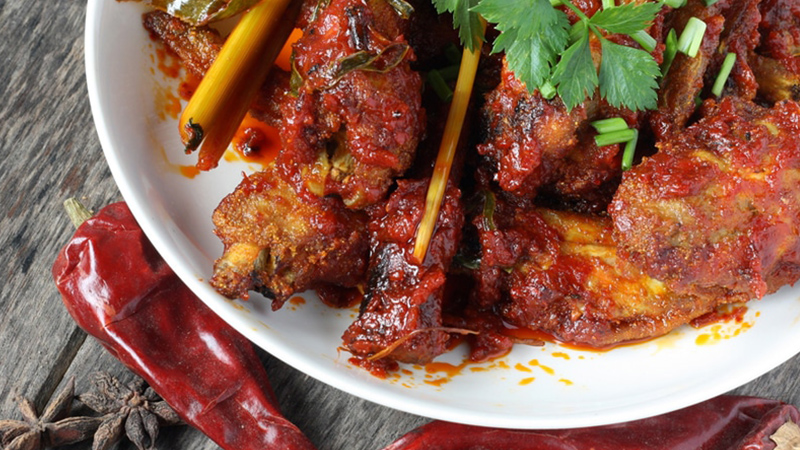
Sambal Goreng
Vegetarians and vegans don’t have to feel left out during the Hari Raya Puasa feast! This vegetable side dish consists of tahu (tofu), tempeh (fermented tofu) and green beans. It’s also spicy and has coconut milk added to it for that extra rich flavour.
Sayur Lodeh
Another well-loved vegetarian dish, Sayur Lodeh is a soup prepared from vegetables in coconut milk, and is usually eaten with lontong, lemang or ketupat.
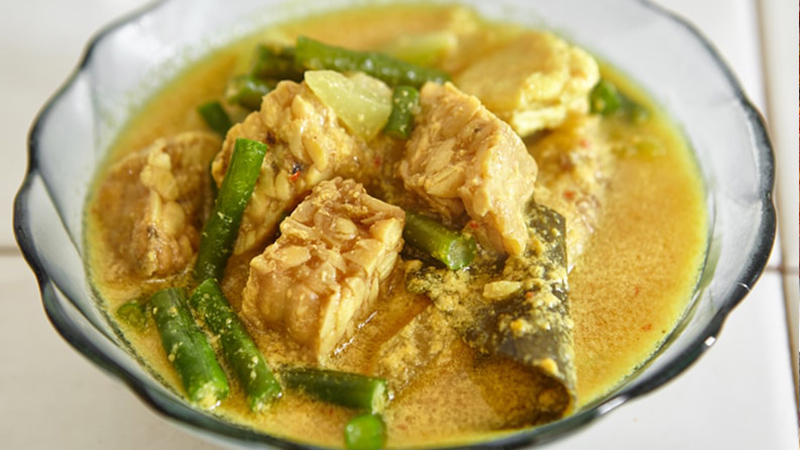
Beef Rendang
Popular around the world and a must-have Hari Raya Puasa food, beef rendang is a signature beef stew cooked with plenty of spices and coconut milk. Made of Indonesian dry curry, beef rendang is tangy with a hint of sweetness from the caramelised coconut milk.
Serunding
Need extra seasoning to give your food a more robust flavour? These spicy fried coconut flakes are made from sautéing grated coconut; they’re usually eaten with staples such as Indonesian Nasi Lemak, Ayam (chicken) Serundeng or other dishes. Some recipe variants also have a sweet taste.
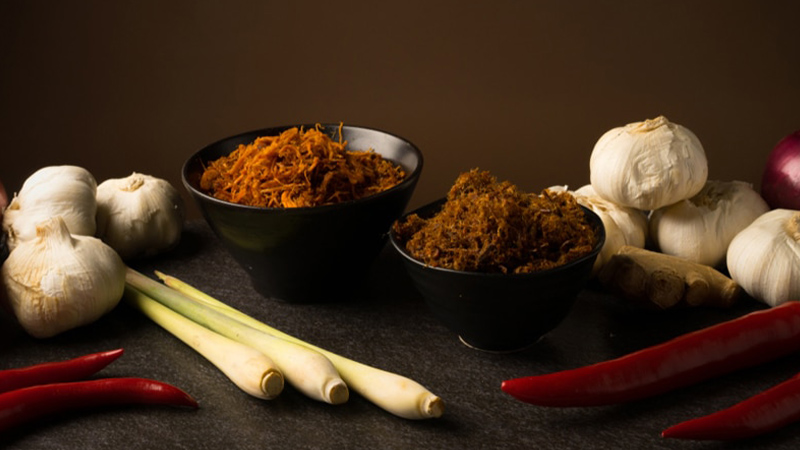
Sambal Tumis Telur
These hard-boiled eggs cooked with sambal (chilli paste) are great with rice and other main dishes too.
Lontong
A Malay rice cake wrapped in banana leaves and boiled, this dish can serve as a staple food instead of steamed rice, and is usually eaten with other dishes like serundeng, sambal tumis telur and sambal goreng.
Ketupat
Similar to lontong, ketupat is a type of dumpling made from fragrant rice wrapped in palm leaves, served as a staple food and usually eaten with other dishes, such as rendang or satay.
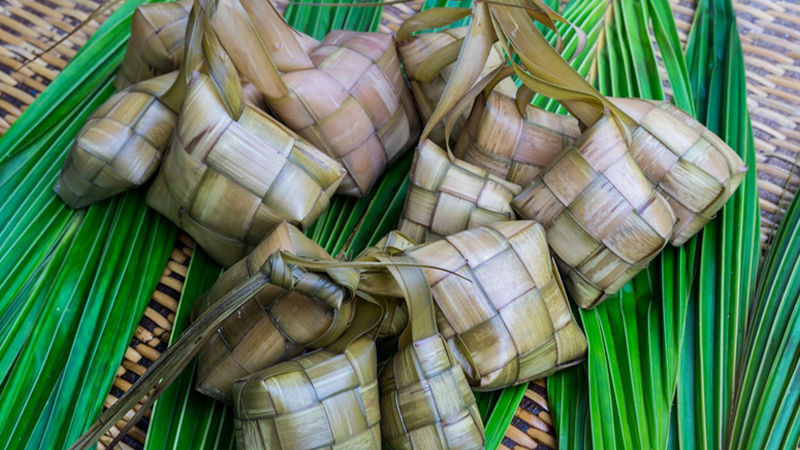
Lemang
Like lontong and ketupat, lemang is also a staple dish and eaten with other side dishes. It’s made of glutinous rice, coconut milk and salt, and cooked in a bamboo stick lined with banana leaves.
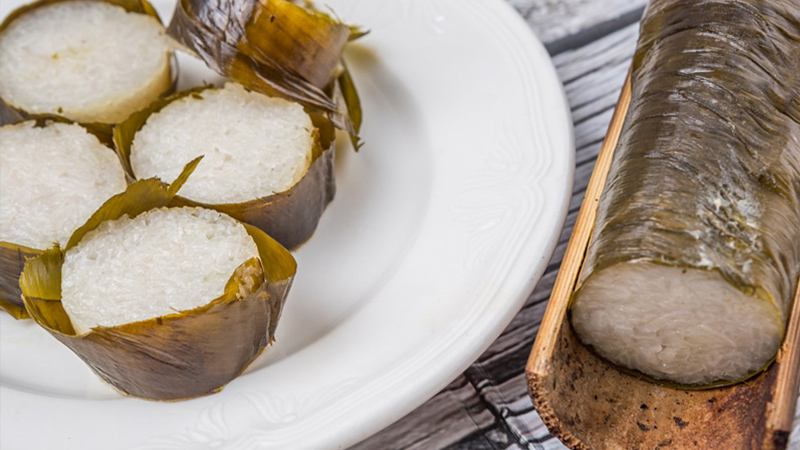
Hari Raya Puasa Snacks
Kek Lapis
Also known as layered cake, this Hari Raya Puasa dessert comes in two varieties: the standard layer pattern and more “fancy” patterns like motifs or shapes. All must include at least two colours.
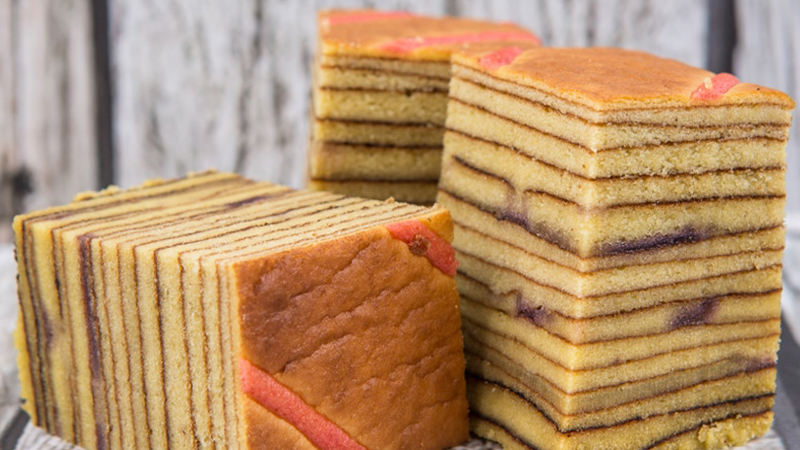
Kuih Bangkit
Also known as tapioca cookies, these powdery sweet snacks come in various bite-sized shapes and are known for melting in the mouth the moment you bite into them.
Kuih Tart
The pineapple tart is a common sight in Singapore and popular during both Hari Raya Puasa and Chinese New Year. Traditionally, the tart has a ball of pineapple paste sitting on top of a round, buttery and salty pastry.
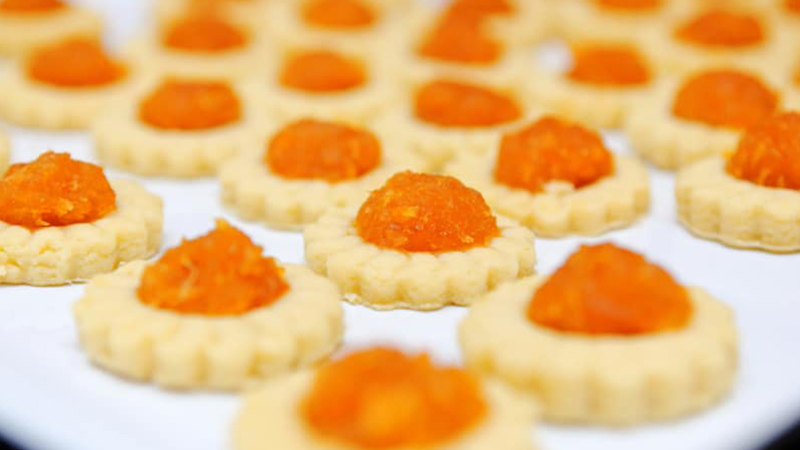
Suji Biscuit
This white bite-sized cookie, also known as a ghee cookie, is soft, crunchy and melts in your mouth. The flavour is typically sweet, buttery and lightly salted.
Ondeh Ondeh
This soft, bite-sized pandan-infused snack comes in the shape of a green ball. It’s filled with gula melaka (palm sugar) and covered with coconut shavings.
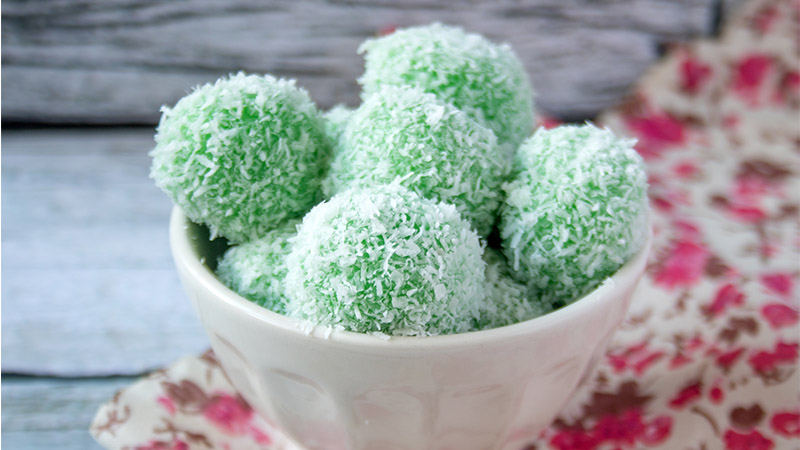
Makmur
A biscuit containing peanuts and coated with powdered sugar, makmur is usually leaf-shaped.
Kek Sarang Semut
Also known as honeycomb cake because of how it looks, this light, airy and sweet cake is made with caramelised sugar.
Almond London Cookies
These long bite-sized cookies are coated with chocolate sauce and topped with chopped almonds.
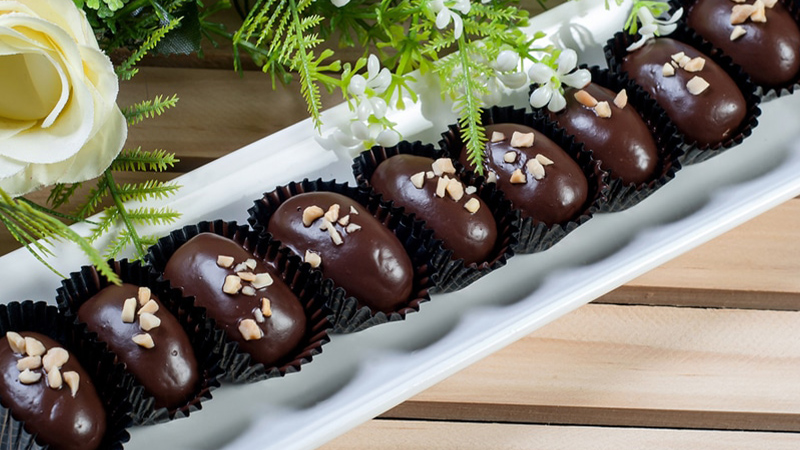
Nutella Tarts
This sweet snack eaten during Hari Raya Puasa is a modern take on the kuih tart, with Nutella replacing the pineapple as a topping.
Honey Cornflakes
As the name suggests, this snack is made of oven-baked cornflakes coated with honey, sugar and butter.
Kuih Ros
Also known as rose biscuits, these sweet and crispy snacks come in the shape of a flower.
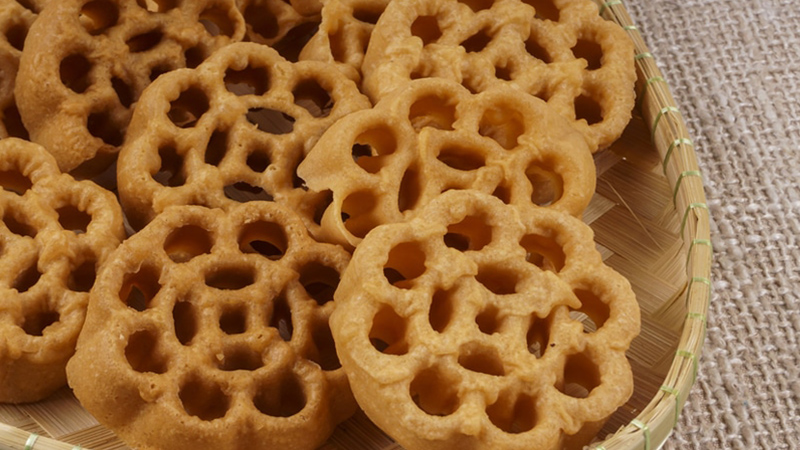
Kek Tapak Kuda
This Malay version of the Swiss roll comes in a variety of flavours, from the original cream filling to chocolate, strawberry, durian and Nutella fillings.
Dengdeng
This halal version of the popular Chinese New Year snack bak kwa consists of thinly sliced pieces of dried meats like chicken and beef.
Click here if you’d like to read more on Hari Raya Puasa – and you can also check out our list of local desserts in Singapore.


